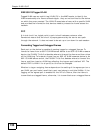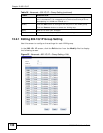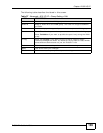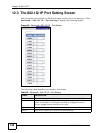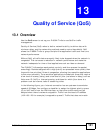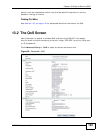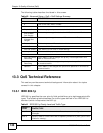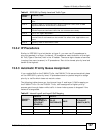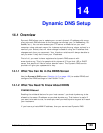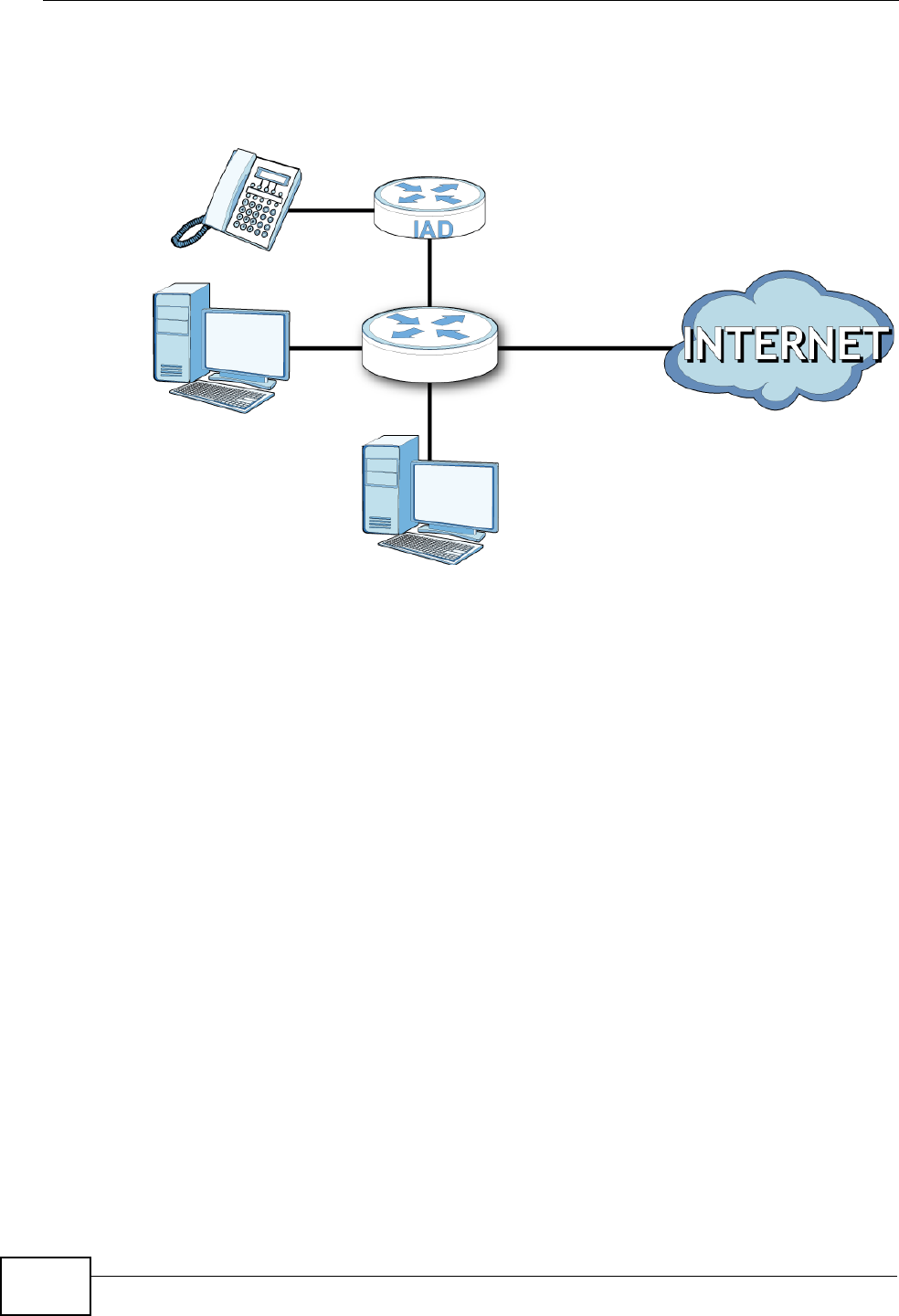
Chapter 13 Quality of Service (QoS)
P-660H-T1v3s User’s Guide
142
these two classes are assigned priority queue based on the internal QoS mapping
table on the P-660H-T1v3s.
Figure 57 QoS Example
13.1.1 What You Can Do in the QoS Screens
•Use the QoS screen (Section 13.2 on page 143) to configure QoS settings on
the P-660H-T1v3s.
•Use the QoS Settings Summary screen (Section 13.2.1 on page 145) to check
the summary of QoS rules and actions you configured for the P-660H-T1v3s.
13.1.2 What You Need to Know
The following terms and concepts may help as you read through the chapter.
802.1p
QoS is used to prioritize source-to-destination traffic flows. All packets in the same
flow are given the same priority. 802.1p is a way of managing traffic in a network
by grouping similar types of traffic together and treating each type as a class. You
can use 802.1p to give different priorities to different packet types.
Tagging and Marking
In a QoS class, you can configure whether to add or change the DiffServ Code
Point (DSCP) value, IEEE 802.1p priority level and VLAN ID number in a matched
packet. When the packet passes through a compatible network, the networking
50 Mbps
DSL
VoIP: Queue 6
Boss: Queue 5
IP=192.168.1.23





